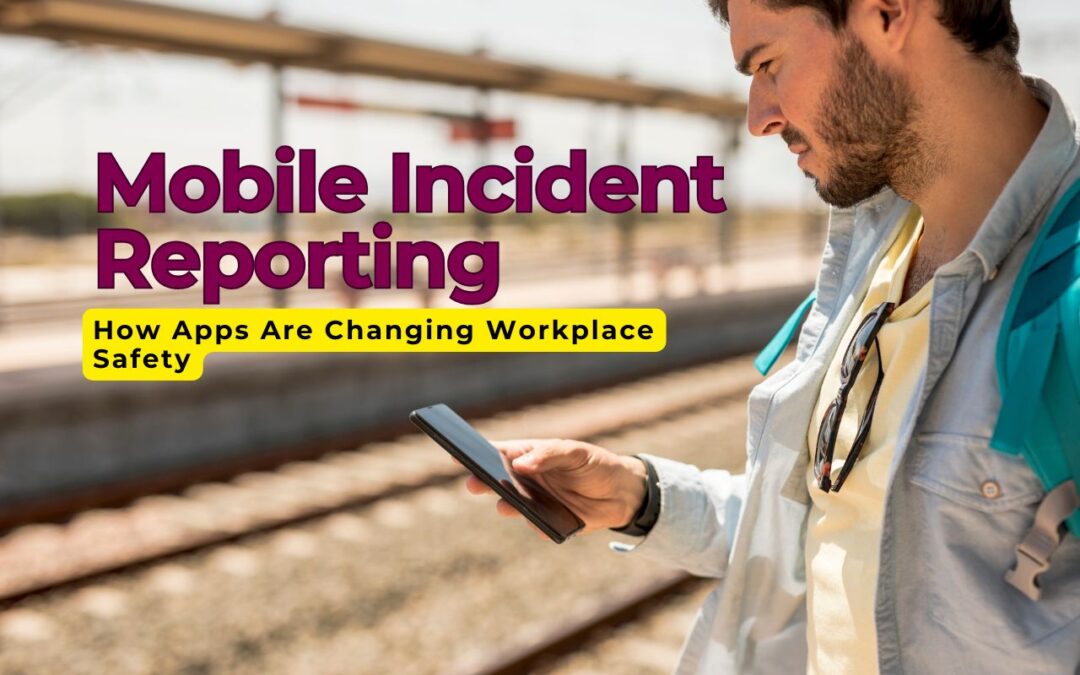Workplace safety has always been a top priority for businesses mobile incident reporting, regardless of their size or industry. Over the decades, organizations have implemented numerous systems and protocols to ensure a secure environment for employees. From safety audits to compliance checks, traditional methods of reporting and managing incidents have played a crucial role. However, in an age where technology continues to shape every aspect of business, mobile apps are revolutionizing the way workplace incidents are reported, tracked, and addressed.
Mobile incident reporting is no longer just a luxury for large corporations with vast resources; it is now a practical, accessible tool that can be implemented by businesses of all sizes. This transformation is not only reshaping workplace safety but also enhancing operational efficiency, encouraging accountability, and fostering a culture of transparency. In this blog, we’ll explore the significance of mobile incident reporting, how it works, and the many ways it’s transforming the safety landscape in modern workplaces.
The Traditional Incident Reporting Dilemma
Before diving into the impact of mobile technology, it’s essential to understand the challenges associated with traditional incident reporting methods. Historically, most organizations have relied on paper-based forms, spreadsheets, and manual communication to document workplace incidents. These methods are often time-consuming, error-prone, and inefficient.
When an incident occurs—be it a slip-and-fall, equipment malfunction, or chemical spill—employees are required to fill out physical forms, submit them to a supervisor or safety officer, and wait for the necessary action to be taken. This delay in reporting can result in prolonged exposure to hazards, missed documentation, and inadequate responses. Additionally, the lack of real-time data limits the ability to identify patterns and prevent future incidents.
Manual reporting also presents challenges in terms of accessibility and record-keeping. Forms can be misplaced, reports can be incomplete, and valuable insights can be lost in the process. Most importantly, employees may be discouraged from reporting minor or near-miss incidents due to the tedious nature of the reporting system, leading to underreporting and increased risks.
The Rise of Mobile Incident Reporting
Enter mobile incident reporting apps—a game-changing innovation that empowers employees to report incidents in real-time using their smartphones or tablets. These tools offer a streamlined, user-friendly interface that allows workers to capture essential incident details immediately, including photos, videos, GPS locations, and timestamps. This shift in reporting practices has made it easier, faster, and more accurate to document workplace hazards.
Mobile incident reporting has emerged as a natural progression in the digital transformation of workplace safety. With nearly everyone carrying a mobile device, organizations are leveraging this connectivity to improve safety culture, compliance, and communication.
How Mobile Incident Reporting Works
At its core, mobile incident reporting is a digital system that enables workers to log incidents directly from their mobile devices. Here’s how the process typically works:
- Immediate Capture of Information: As soon as an incident occurs, employees can open an app and input key details. This can include the type of incident, location, people involved, nature of the injury (if any), and contributing factors. They can also upload photos or videos to provide visual context.
- Automated Notifications: Once submitted, the report is automatically sent to relevant supervisors, safety officers, or departments. This eliminates the lag time associated with manual reporting and enables prompt action.
- Centralized Data Management: All reports are stored in a centralized digital system, making it easy to track, retrieve, and analyze incident data over time.
- Compliance and Auditing: Digital records can be maintained to ensure regulatory compliance, and detailed logs can be used during audits and investigations.
- Follow-Up and Resolution: Safety managers can assign corrective actions, monitor the progress of investigations, and close reports once resolved—all from within the platform.
Benefits of Mobile Incident Reporting
1. Speed and Accuracy
Perhaps the most immediate advantage of mobile reporting is the speed with which incidents can be documented. Employees no longer have to wait until they return to a workstation or office to fill out forms. They can report incidents from the field, warehouse, factory floor, or construction site in real-time. This leads to more accurate information, as details are captured while still fresh in the mind.
2. Increased Employee Engagement
By providing employees with an easy-to-use tool, organizations encourage more proactive safety behavior. Workers feel empowered to participate in the safety process, knowing their reports are acknowledged and acted upon. This sense of involvement fosters a stronger safety culture and demonstrates the company’s commitment to worker wellbeing.
3. Real-Time Insights
Digital reporting systems provide safety teams with real-time visibility into ongoing incidents and potential hazards. Managers can detect trends, identify recurring issues, and take preventive measures based on data-driven insights.
4. Enhanced Accountability
Mobile apps often include features like user authentication, time stamps, and GPS tracking, which improve accountability and transparency. Supervisors can verify the legitimacy of reports and ensure that appropriate actions are taken.
5. Improved Compliance
Regulatory bodies often require detailed records of workplace incidents. Mobile reporting systems simplify compliance by automatically organizing and archiving incident data. This reduces administrative burden and makes it easier to produce documentation during inspections or audits.
6. Streamlined Communication
When incidents are reported digitally, relevant personnel are instantly notified, enabling quicker responses. This can be critical in high-risk environments where delays could lead to more serious consequences. It also ensures that everyone involved in the safety process is on the same page.
Overcoming Implementation Challenges
While mobile incident reporting offers numerous benefits, organizations may face some challenges during implementation. These can include resistance to change, lack of digital literacy among employees, and concerns about data security. However, these obstacles can be overcome with proper planning and training.
- Employee Training: It’s crucial to train employees on how to use the reporting system effectively. Simple tutorials, hands-on practice, and support from supervisors can go a long way in ensuring adoption.
- User-Friendly Design: Selecting or designing a system that is intuitive and easy to navigate is essential. The more user-friendly the tool, the more likely employees are to use it.
- Clear Communication: Management must clearly communicate the purpose of the mobile system and how it aligns with the organization’s commitment to safety. This helps gain employee buy-in and reduces skepticism.
- Data Security: Addressing concerns about the privacy and security of sensitive data is vital. Businesses must ensure that the platform used complies with data protection standards and employs encryption and access control measures.
Creating a Culture of Continuous Improvement
Mobile incident reporting is not just about digitizing old processes—it’s about creating a dynamic, responsive safety culture. By enabling continuous monitoring and feedback, organizations can build an environment where safety is not a checklist but an ongoing commitment.
Regular analysis of reported data can help safety teams identify high-risk areas and implement targeted interventions. For instance, if data shows an increase in equipment-related incidents in a specific department, the company can arrange maintenance, retrain staff, or update safety protocols in that area.
Additionally, recognizing and rewarding employees who consistently report near misses and hazards can reinforce positive behavior and encourage others to do the same. This proactive approach ultimately leads to fewer incidents, reduced downtime, and improved morale.
The Future of Workplace Safety
As technology continues to evolve, mobile incident reporting is expected to integrate with other digital tools such as wearable sensors, AI-driven analytics, and real-time monitoring systems. Imagine a future where safety incidents are not only reported but predicted based on behavioral data, environmental conditions, and machine learning algorithms.
With advancements in automation and connectivity, the possibilities are endless. Companies will be able to detect early warning signs, deploy immediate alerts, and orchestrate faster emergency responses, all with minimal human intervention. Mobile apps will serve as the foundation of these integrated safety ecosystems.
Conclusion
The shift toward mobile incident reporting marks a pivotal change in how organizations approach workplace safety. By replacing outdated, inefficient systems with real-time, digital solutions, companies are not only improving safety outcomes but also creating a culture of responsibility, transparency, and continuous improvement.
Mobile technology empowers every employee to be an active participant in workplace safety. It removes barriers to communication, accelerates response times, and equips safety teams with the insights they need to make informed decisions. As more businesses recognize the value of this innovation, mobile incident reporting will undoubtedly become a cornerstone of modern occupational health and safety strategies.
In a world where every second counts, the ability to report, respond, and resolve incidents swiftly can make all the difference, not just in terms of productivity but in saving lives. The future of workplace safety is mobile, and it’s already here.













